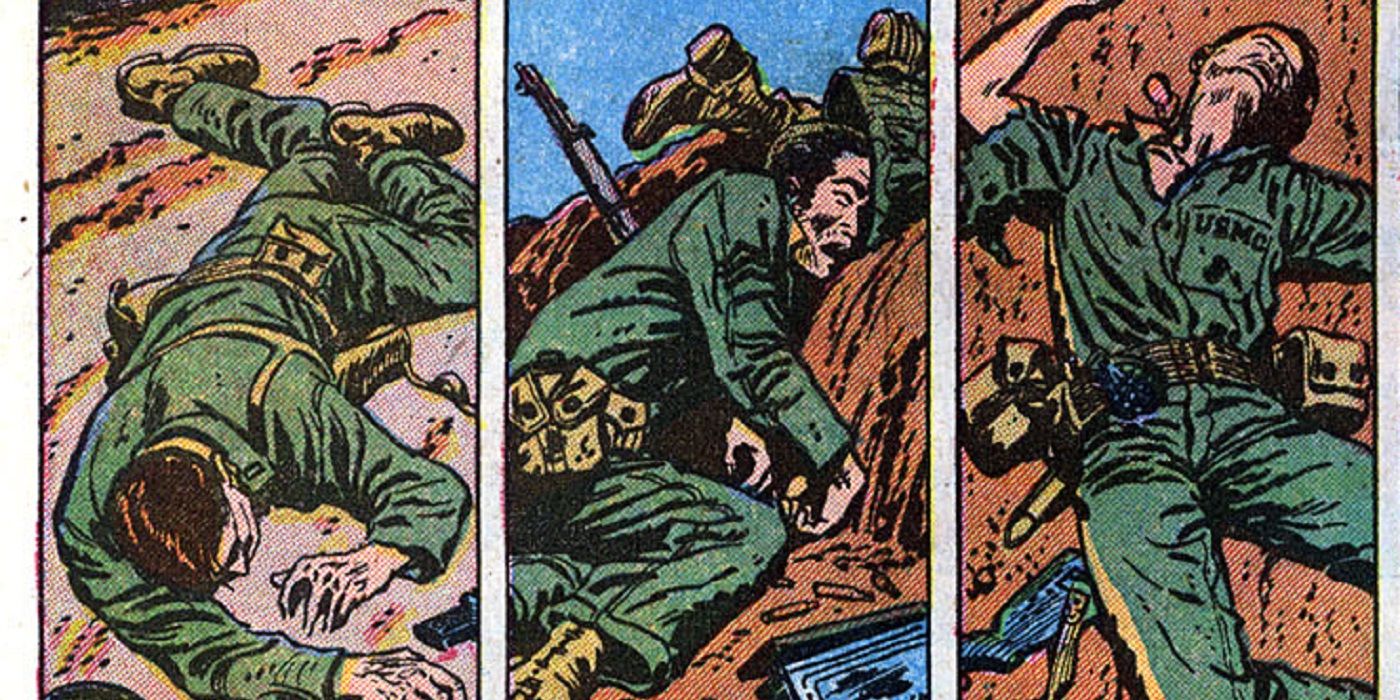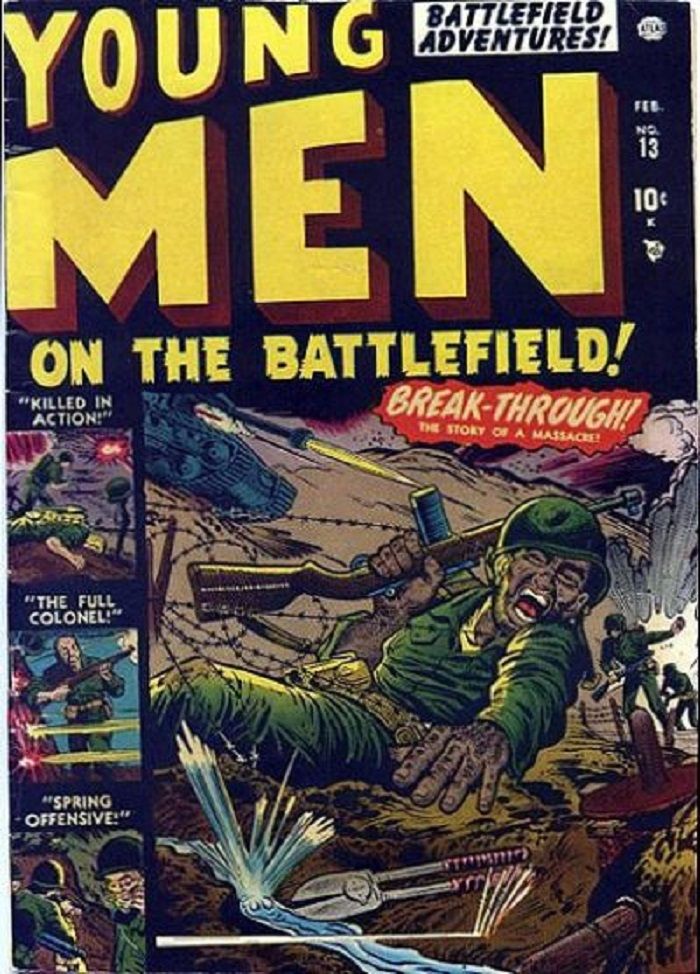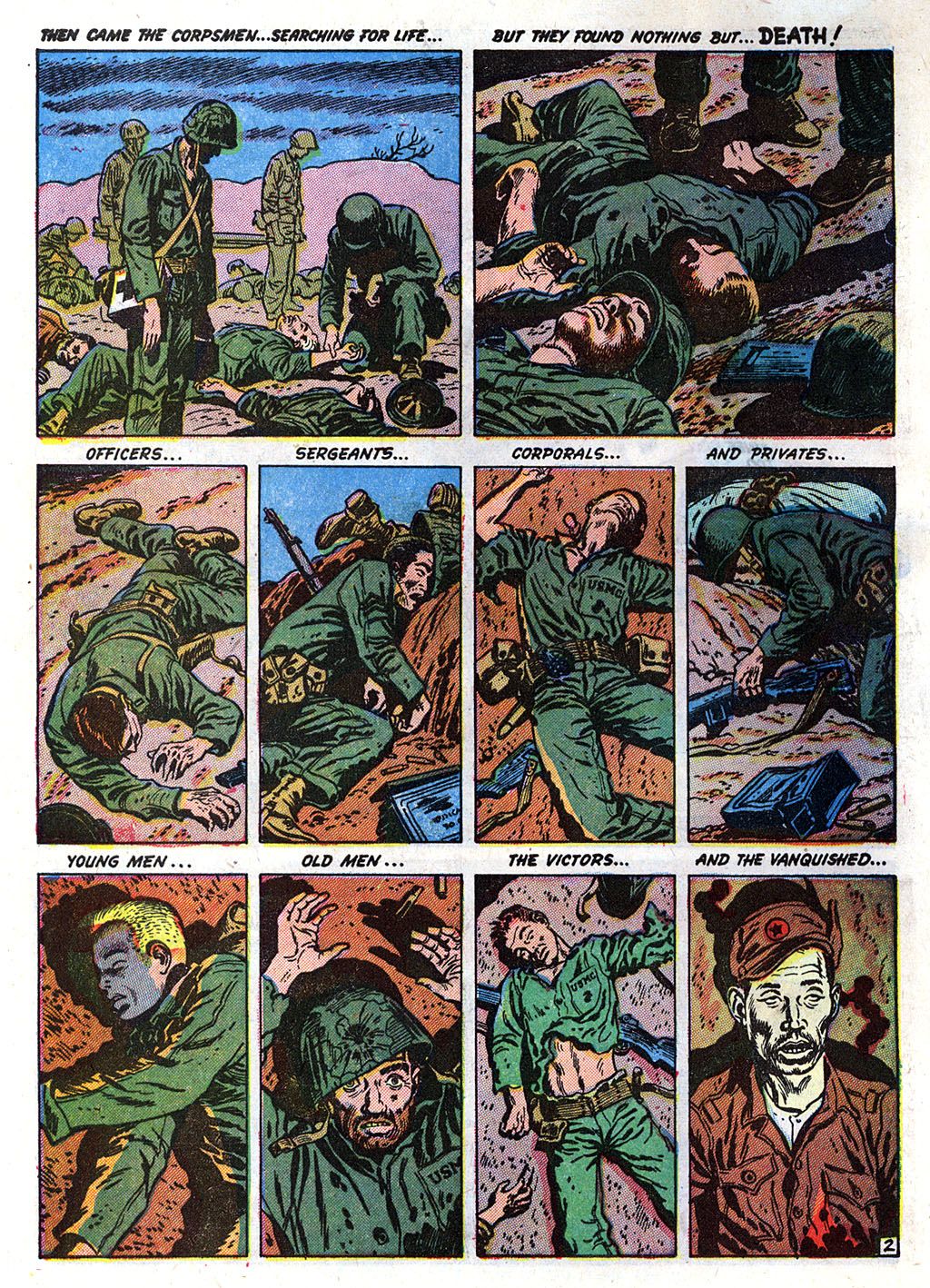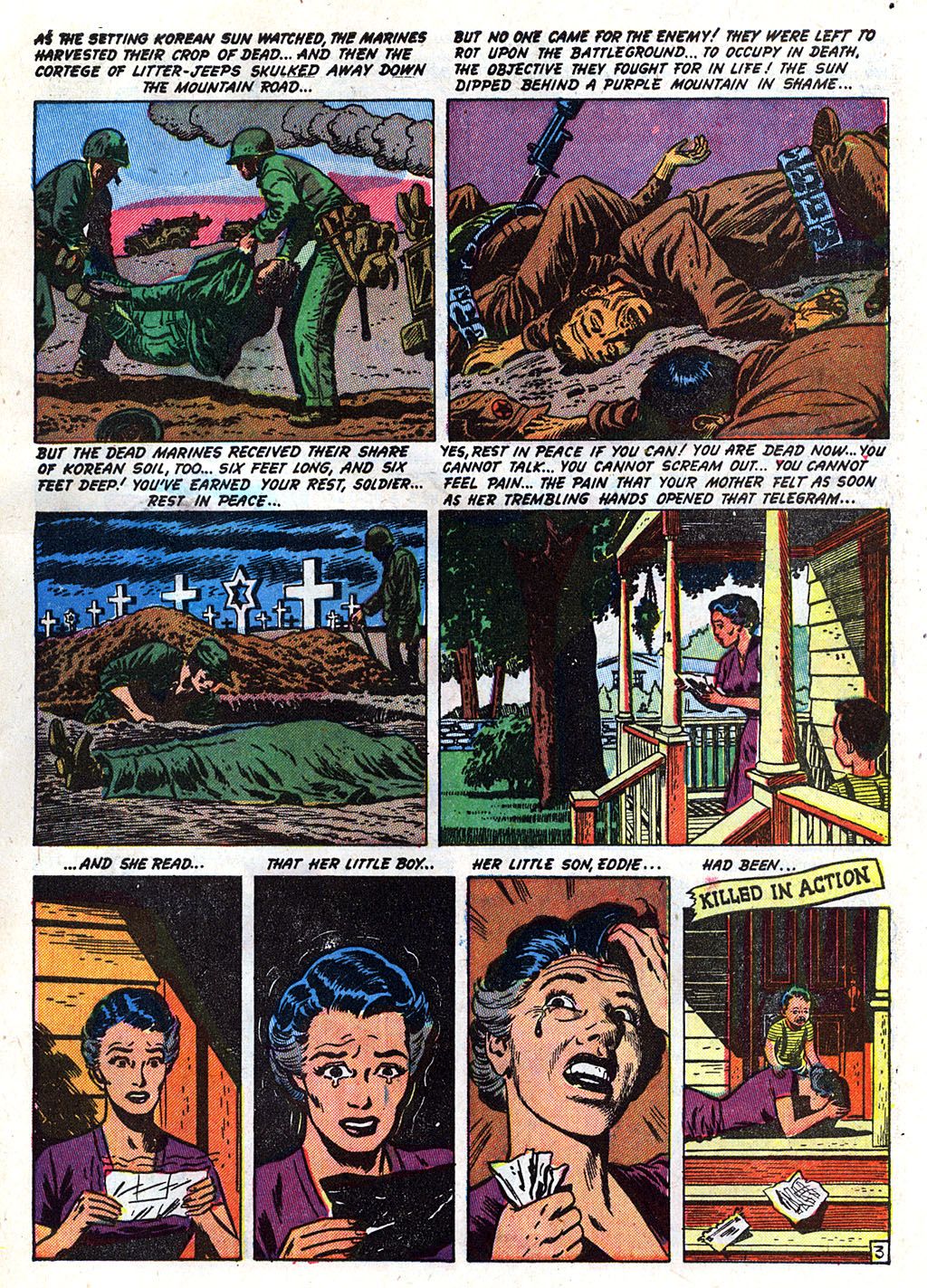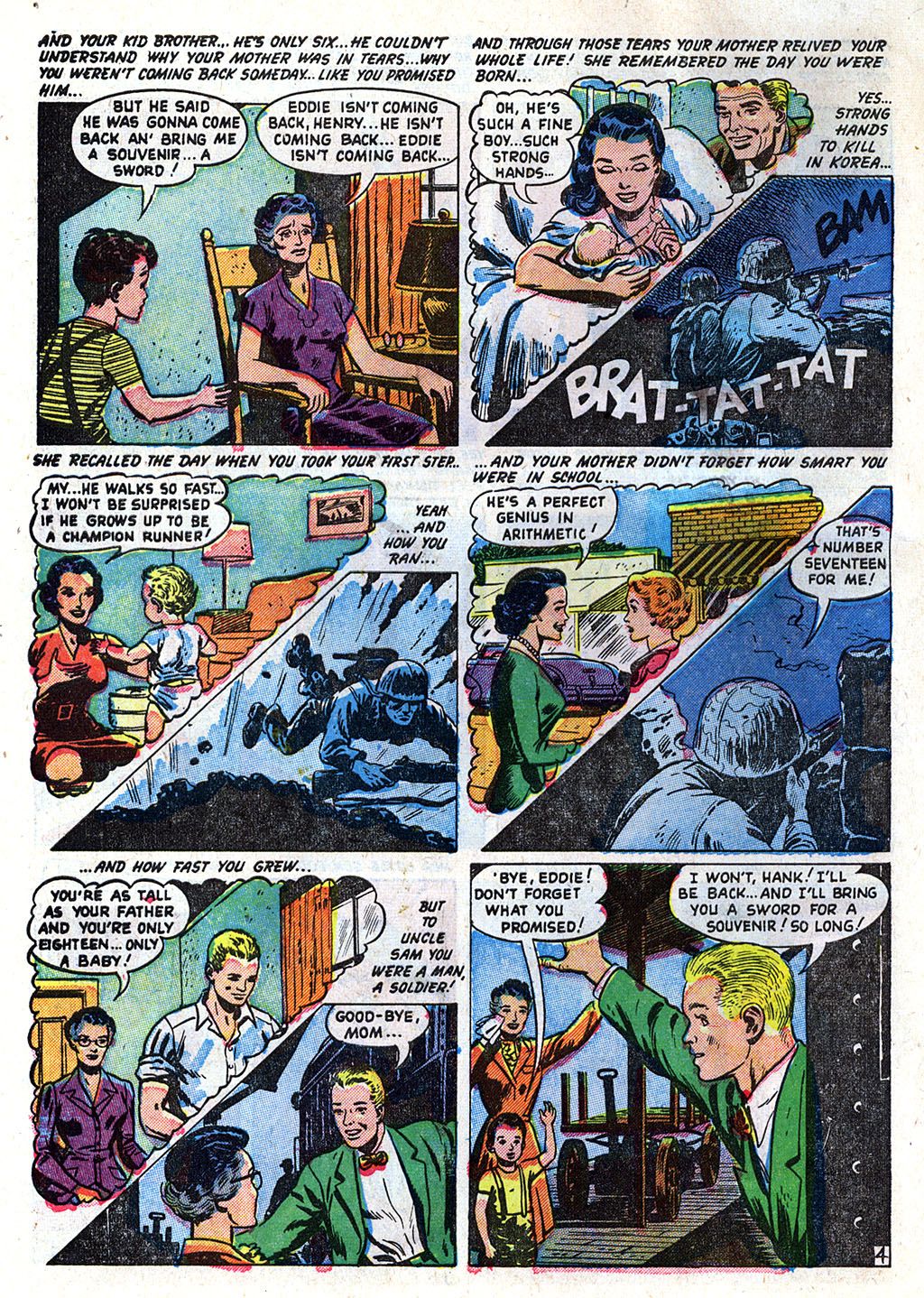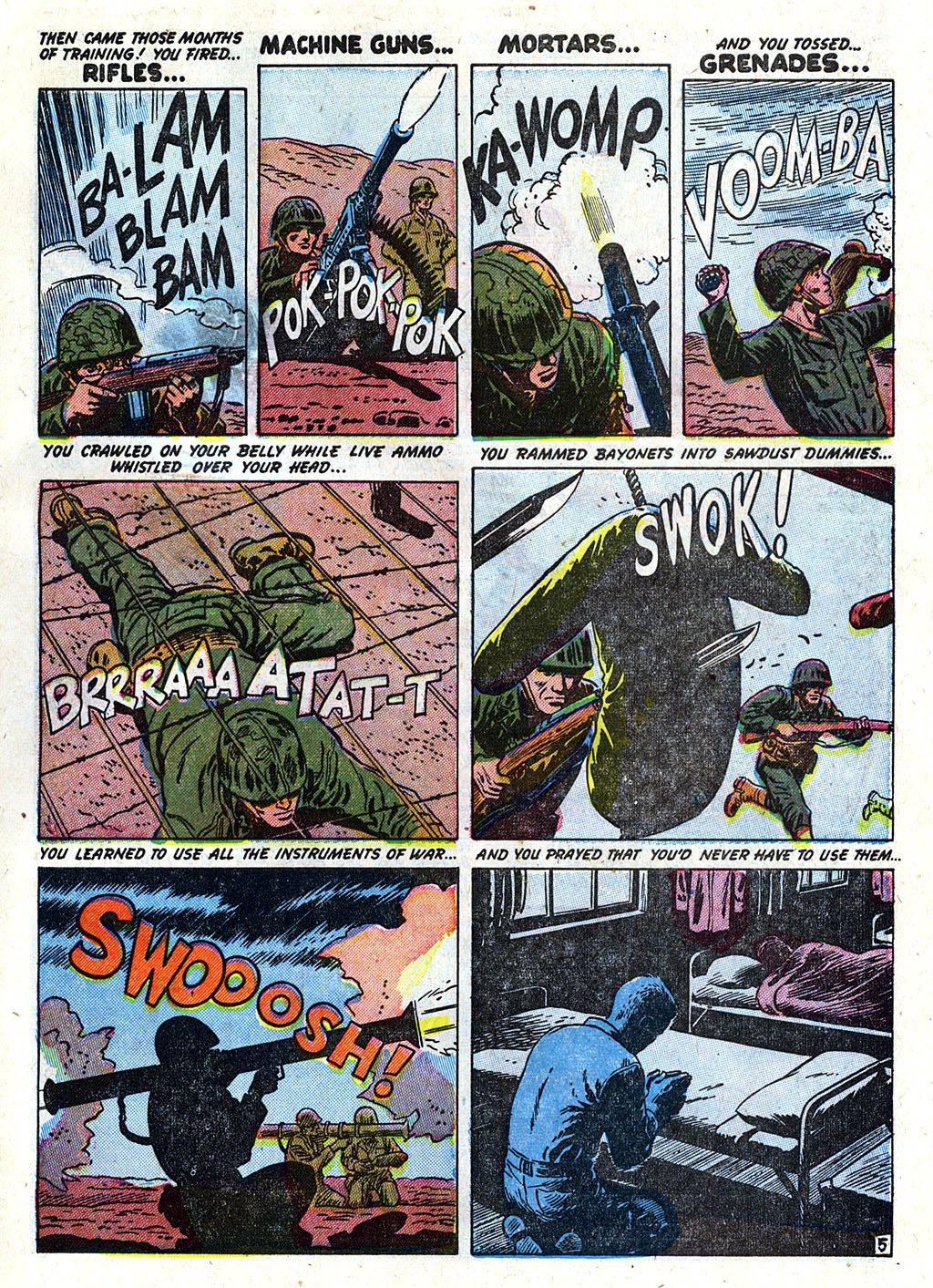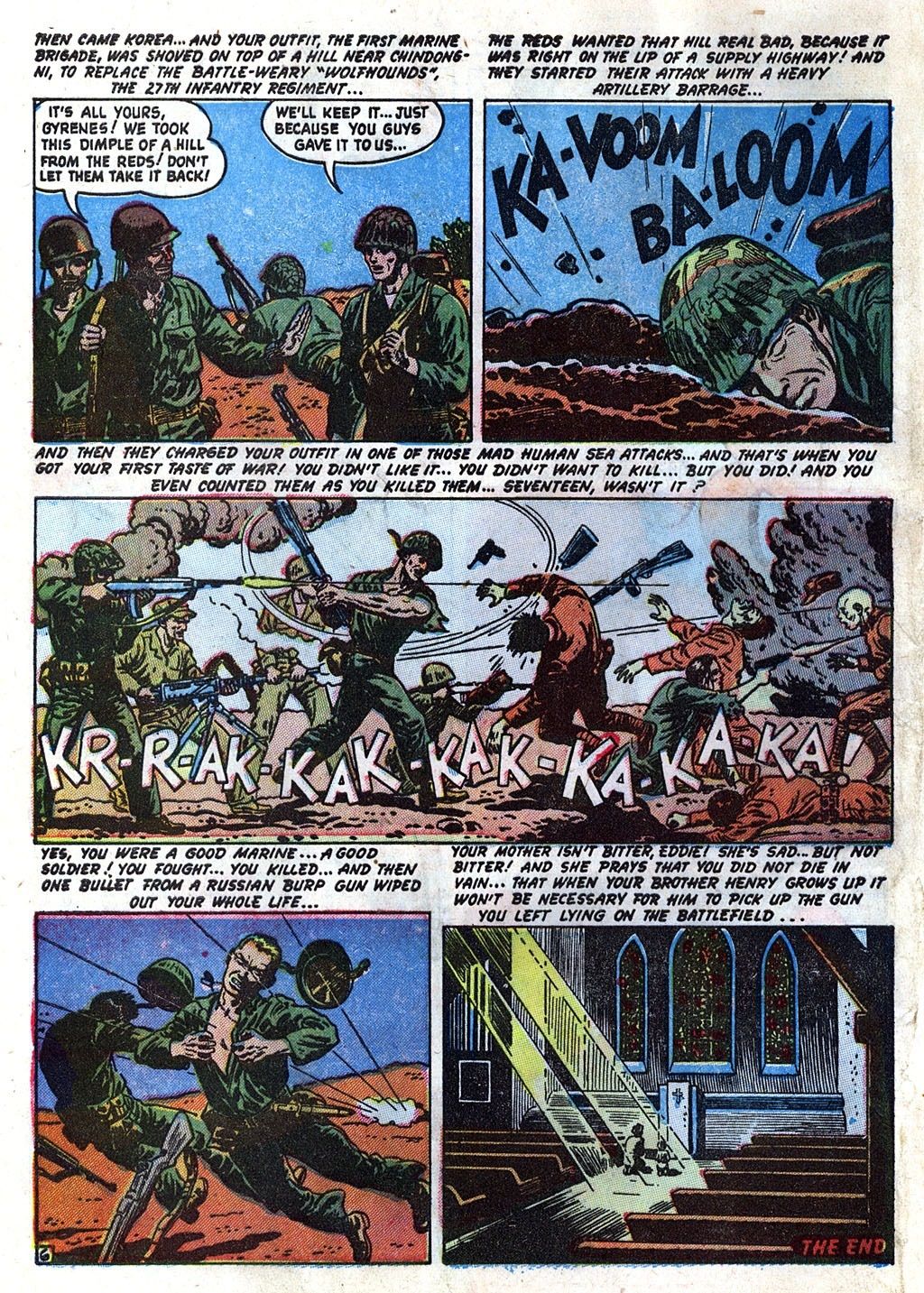This is a feature called "Live By No Man's Code." As you presumably know, in the mid-1950s, most of the major comic book companies (including DC Comics and what would eventually be known as Marvel Comics) agreed to form a Comics Code Authority that would dramatically reduce the amount of violence and gore that could be shown in a Code-approved comic book. It effectively put EC Comics comic book line out of business, as they relied so much on horror and crime comics. Of course, since the "Golden Age" of comic books began in the 1940s, then that means we had over a decade of Pre-Code comic books. So, in this feature, we examine Pre-Code comic books to see the amusing levels of gore and violence that they let them get away with at the time.
I was intending this feature to specialize in superhero comic books, but I realized that it's probably just as interesting to see how the Comics Code affected other prominent genres of comic books. Take, for instance, the war comic book.
The war comic is a fascinating creature in that in the biggest war that the world has seen in the last century plus, war comics did not really exist. When World War II was actually going on, the people involved in the war wanted escapist fare, not to read stories about what they were currently going through. There were some notable exceptions when it came to the more fanciful war heroes, like Terry and the Pirates and Joe Palooka both saw their leads enter into World War II and people ate that up. Simiarly, Jack Kirby and Joe Simon's Boy Commandos plus the Blackhawks were very popular. What wasn't popular was the sort of more traditional war comics that we're all used to, the ones that Joe Kubert would draw for DC Comics, ya know? Once the war ended, though, people obviously were VERY interested in reading about what the soldiers did in World War II winning the war for the United States and its allies. So the traditional war comic was born.
Well, soon after World War II, though, the United States entered into the Korean War and now comic book companies had an awkward situation. Unlike the Vietnam War, the Korean War was not a necessarily unpopular war on the homefront, but it was still awkward as heck to be selling war stories DURING a war, and comic book companies typically just went with "rah rah" type stories.
That is what makes Young Men on the Battlefield #13 (from 1952) stand out so much, as the lead feature by Hank Chapman and Russ Heath, "Killed in Action," really got down to the nitty gritty of things.
Heath later noted in his Comics Journal interview, "I did a war story for [Atlas/Seaboard]. I was inspired by the fact that they didn’t censor stuff. War is ugly. If you’ve been forced to do war stories, you want to do one that shows war for what it really is. This is the message I wanted to get across to the kids. War is not Sgt. Rock running across the battle ground, bopping people with his fist, and nobody getting hurt. I always wished they’d have in the captions, “Good lives were lost in this battle,” even if they couldn’t show it! Every graduating class in high school should have to look at gruesome films of war so they would learn how unacceptable and obscene war really is."
Well, he sure did that in "Killed in Action"...
Page 2: [valnet-url-page page=2 paginated=0 text='See the sad tale!']
Wow.
What a powerful story. Russ Heath does wonders with his panel designs (I think he was working full script back then, so Chapman deserves a lot of the credit there, as well) and the sheer oomph of some of those scenes. Chilling.
Okay, folks, feel free to send me suggestions for comics from the Golden Age that you found interesting in just how bloody and violent (or sexual, I guess, but that was less of an issue) that they were!

